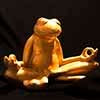Earlier this year we visited the Staten Island Botanical Gardenof New York City and its Chinese Scholar's Garden寄興園,one of few places in north American where you can see Plum blossom in a SuZhou 蘇州 garden setting. By the way, Suzhou is a city an hour north of Shanghai that Marco Polo called “Venice of Orient” more than 800 years ago. It is famous for its sophisticated garden architecture integrating residence with water, fish, rocks, plants and flowers. Here are some photos we took that day; you can get some ideas of the celebrated plum blossoms and SuZhou garden.





How did plum blossom become so popular in China is not totally clear to me although the symbolism of it has been well-known for thousands of years. With over 2 dozens of dynasties of imperial rules, I actually can’t recall it being any royal families’ love or luxury. Rather it appears to be the favorite by the scholars, the most respect but non rich class in ancient China, thus the trend setting for the mass to follow. Some species of the trees are known to persevere and blossom in cold snowy winters that suggest fortitude and uprightness in adverse environment. It is people’s flower perhaps because of it symbolizes hope and inspiration despite tough lives through the winter.
There have been numerous poems and paintings of plum blossoms over the centuries. A representative modern one is by Mao Zedong 毛澤東 in Dec 1961 when he tried hard to encourage himself and others be positive and engaging, facing tremendous domestic and international crises during that time. Here is the poem along with Mao’s calligraphy and my English translation.
卜算子 詠梅
毛澤東
風雨送春歸,飛雪迎春到。已是懸崖百丈冰,猶有花枝俏。
俏也不爭春,只把春來報。待到山花爛漫時,她在叢中笑。
On Plum
by Mao Zedong
Storms return us the spring whose arrival is greeted with flying snows;
Energized plum blossoms over cliffs covered in ice.
Announcing solemnly the coming of spring;
They grin in pleasure as joined by others
In contrast, it has also been considered sometimes as symbol of self-righteousness and narcissism. Indeed Mao’s poem was in response to a negative and self-pity thought expressed in the poem of same style by the famous Song dynasty poet Lu You陸游 (1125-1210 AD) who wrote, as he felt he was underutilized and not appreciated and supported by his superiors:
卜算子 詠梅
陸游
驛外斷橋邊,寂寞開無主。已是黃昏獨自愁,更著風和雨。
無意苦爭春,一任群芳妒。零落成泥輾作塵,只有香如故。
On Plum Does this give us some clues of the contradictions of the Chinese psyche? Well, not so fast! It is more complicated than that. With the plurality of Chinese culture and pragmatism, you will probably not be surprised if I tell you there is yet another unofficial national flower that is the (late) Spring peony 牡丹. New York Botanical Garden is Bronx does have a wonderful collection and display of them around May. Here are some photos that I took last season earlier this year. As you can see, they are truly stunning and symbolize, guess what, riches and honor, with its layers of large petals and majestic bowls. Again, you would find many poems and paintings about peony in Chinese arts and literature. It is however more often than not one would find social concerns behind the glory of this flower as illustrated in the following poem by Bai Juyi 白居易 (772-846 AD) of Tang dynasty, one of the most celebrated poets in Chinese history. flowers retains their beauty while carried home. On lighter side, before I go, I would like to share with you a popular Chinese song on Plum blossom. It was the theme song composed by Liu Jia-Chang 劉家昌 for his 1976 movie of the same title about movements against Japanese occupation in Taiwan during WWII. The song became so popular that it is often considered the unofficial national anthem (of Taiwan). Here is a video recording of it, performed in 1981 by none other than the late superstar Teresa Deng 鄧麗君 who was nick- named "Little Deng" (vs. then supreme leaderDeng Xiaoping of China) for her popularity. Talk to you soon!
by Lu You
Plum blossoms next to the ruined post;
Met alone with storm under setting sun.
Unseduced by the coming Spring among the jealous flowers;
Fragrant remains as it dusts to the ground.
秦中吟之十 買花
白居易
帝城春欲暮,喧喧車馬度。
共道牡丹時,相隨買花去。
貴賤無常價,酬直看花數。
灼灼百朵紅,戔戔五束素。
上張幄幕庇,旁織巴籬護。
水灑復泥封,移來色如故。
家家習為俗,人人迷不悟。
有一田舍翁,偶來買花處。
低頭獨長嘆,此嘆無人喻。
一叢深色花,十戶中人賦!
On Peony
by Bai Juyi
Spring is coming to an end in capital; flower market is bustling as ever.
Peony season is upon us as the riches gather to shop.
Price is arbitrary, but a function of quantity.
Hundred red beauties costs a bundle.
Protected from the sun in cover and wrapped carefully with guards,
Sprinkled in water and rooted in mud;
People are accustomed to and obsessed with this luxury.
A farmer passes by the market,
And nobody noticed his long sigh.
A bundle of peony costs ten families’ tax.
















